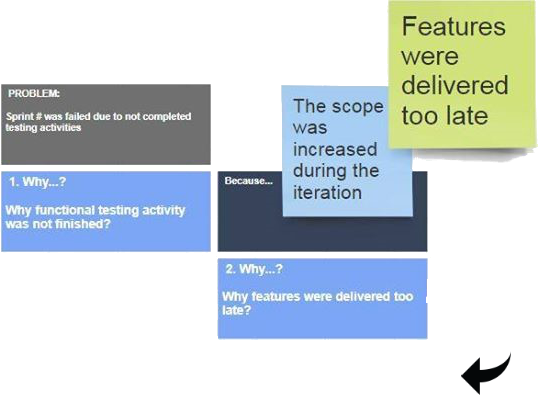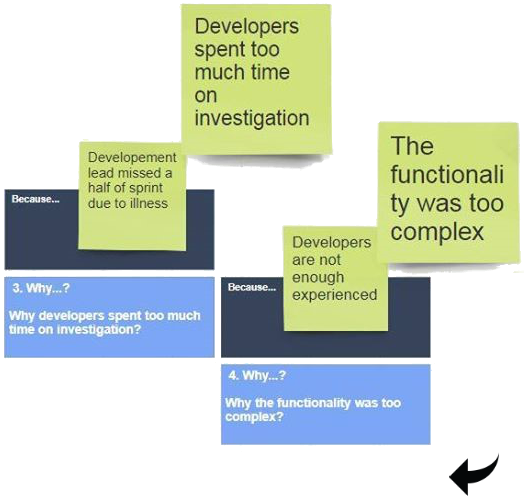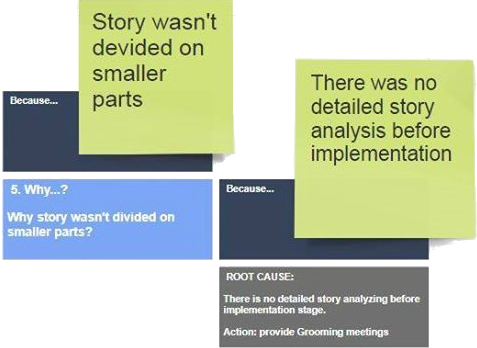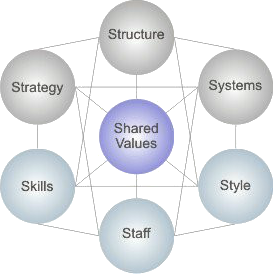
USA
Thank you for reaching out to Sigma Software!
Please fill the form below. Our team will contact you shortly.
Sigma Software has offices in multiple locations in Europe, Northern America, Asia, and Latin America.

USA

Sweden

Germany

Canada

Israel

Singapore

UAE

Australia

Austria

Ukraine

Poland

Argentina

Brazil

Bulgaria

Colombia

Czech Republic

Hungary

Mexico

Portugal

Romania

Uzbekistan
Any algorithm of analysis and problem-solving starts with the fundamentals: is what we consider to be a problem really a problem? It is recommended to give an answer in writing. Doing so, you shape and formulate your thoughts better and find more precise and accurate definitions than if you were recreating the situation in your imagination. The following techniques will help to channel your thinking.
None, whose portion is so small
Of present pain, that with ambitious mind
Will covet more.
– John Milton –
One of the most popular techniques to identify the cause of a problem. Rather often the whole RCA is reduced to it alone. The advantages are that it is fast and simple.
Areas of application: simple and moderately complex problems.



Step 1. Gather a team
The discussion must involve those who are directly related to the problem.
Step 2. Identify the problem
If it was not identified before. The definition must be short and agreed by all team members.
Step 3. First «Why?»
Ask the question why the problem has arisen. Answer with facts, try to avoid speculations.
Step 4. The other «Why’s?»
Ask «why?» again and keep doing so until the root cause is found. 5 is not a final number. There may be more of fewer questions. At the same time, you can make several strings of questions and make a new flow for each received answer.
Step 5. Prevention plan
When the team has identified the root cause, it is high time to discuss the list of measures to prevent the problem from occurring again in the future.
Step 6. Analysis
The step of utmost importance. Keep track of how effective the taken measures have been: whether they have helped to eliminate the problem or alleviate its impact. If the aim has not been reached, it is necessary to repeat the process to make sure that the root cause is found correctly.
Tips:
1) Try to go fast from one question to the next. It will allow to see the big picture of what has happened before your conscious mind makes a judgment about the problem.
2) When the question «why?» does not give a useful answer and you cannot continue, you are likely to have come to the root cause.
Be careful when analyzing complex and critical problems. The «5 why’s» technique can lead you in one or two logical directions while there may be many more of them in reality. For such problems other techniques can prove more efficient: Cause and Effect Analysis (see below) or Failure Mode and Effects Analysis which I will discuss in the next article.
Areas of application: complex problems

There are problems with a variety of factors and a whole complex of causes. There is a high risk to get confused, identify wrong causes and draw an incorrect plan, if it’s done in a rush. Therefore it makes sense to break them down. There is a very simple but effective technique to break down complex problems. It is called Drill Down and it can be used for finding causes in RCA.
First of all, write down the problem along the left side of a sheet of paper (do not restrict your imagination to a copy-book size). Then put down the points of the next level of detail to the right of the main problem. These may be factors affecting the problem, or information related to it, or questions which are hard to answer. The process may be repeated at every stage. Keep «drilling» the problem down until the main factors are found.
If you do not possess enough knowledge about the problem, go back to CATWOE technique, which was discussed earlier, to look at it from different perspectives. Besides, Drill Down will be even more effective together with «5 Why’s».
The more components a problem has, the more complex the solution will be. How can we create a diagram the analysis of which would help to direct our thinking in the correct way, without skipping any important factors? A metaphoric model may be the answer. One of such kind is the «Fishbone Diagram», also known as Cause and Effect Analysis.
Areas of application: complex problems

Step 1: Identify the problem
Write down the problem you are faced with. If necessary, define the people involved and describe the details – where and when it occurred. This is the head of our «fish». Draw a horizontal line from it – the «backbone». The factors affecting the issue will be attached to it like bones in a fishbone. The main thing here is to identify the problem correctly. For this, I advise to use «CATWOE» again.
Step 2: Study the main factors
Do not limit your imagination in selecting factors. Systems and equipment, organization and documentation, human and non-human, white magic and black magic – all these can affect the problem to a certain degree. The more factors you encompass, the higher chances you have to touch the truth.
Take the McKinsey 7-S Framework as a starting point. It is based on a theory that to operate successfully an organization needs to keep track of functioning of the 7 interconnected elements: Strategy, Structure, Systems, Shared Values, Skills, Style and Staff.

Skills: the skills and competencies of the employees
Proceed to Problem Solving: Techniques. Part Three.

Vlad has been engaged in software development since 2009. Over the years, he had a chance to get a deep understanding of the process and related problems. Today Vlad works a Test Engineer and is responsible for improving the software development process, preventing defects, and spotting errors in functioning of the product.


A Software Bill of Materials (SBOM) is becoming one of the most important documents in modern software development. Still, many organizations struggle to create...

As cloud sovereignty becomes a strategic priority across the EU, Sigma Software applies its deep expertise and extensive experience to contribute to the develop...

Data is everywhere, yet its payoff isn't always there. Many IT leaders struggle with scattered analytics, rising storage costs, and unclear returns.We face...
Would you like to view the site in German?
Switch to German